The Third Space
Najaax Harun, Marta Mattioli, Terrence Musekiwa, Xavier Robles de Medina, Youssra Raouchi, Ovidiu Toader
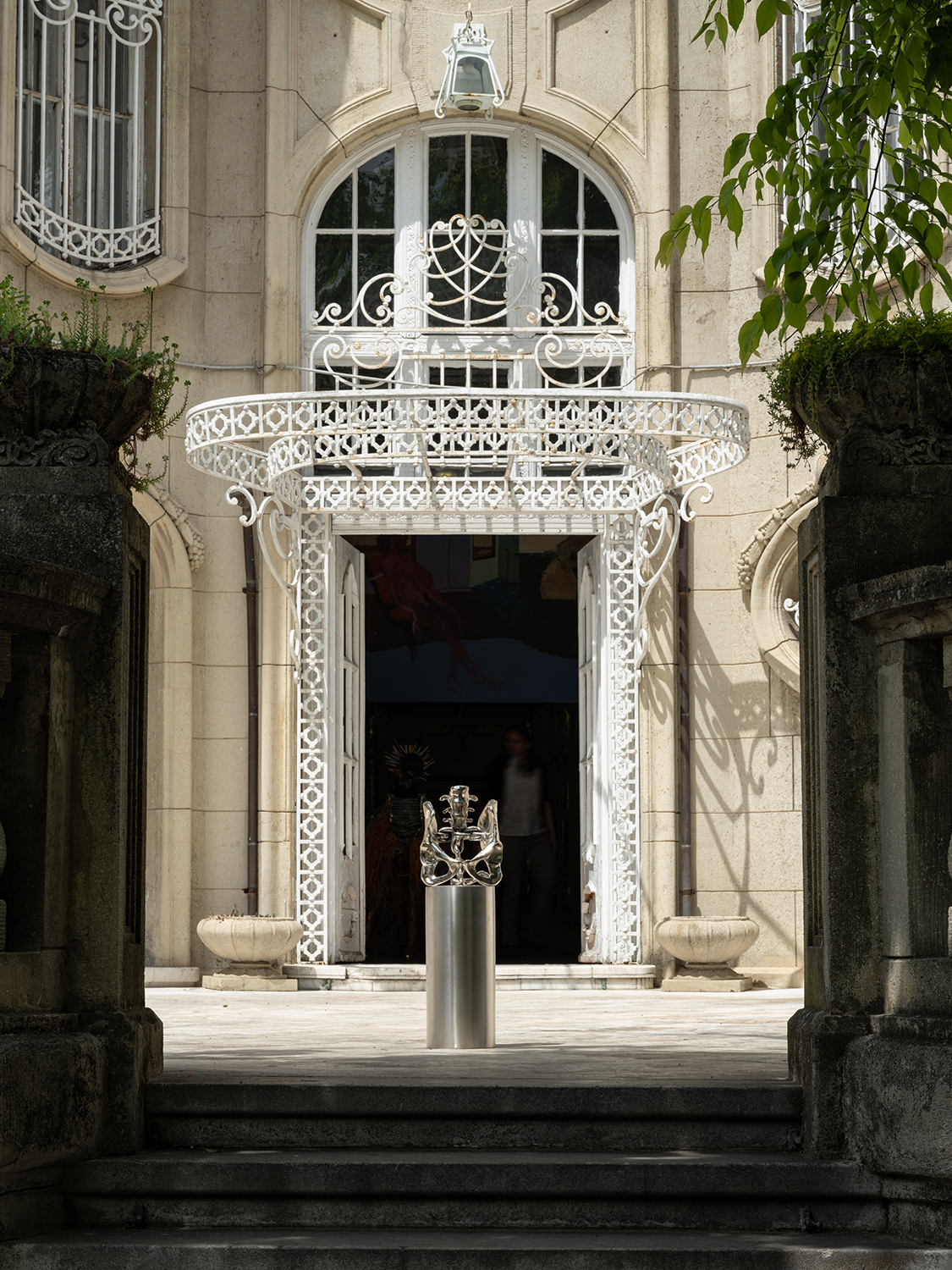
Marta Mattioli
Linked, 2024
bronze, nickled chrome
40 × 25 × 15 cm
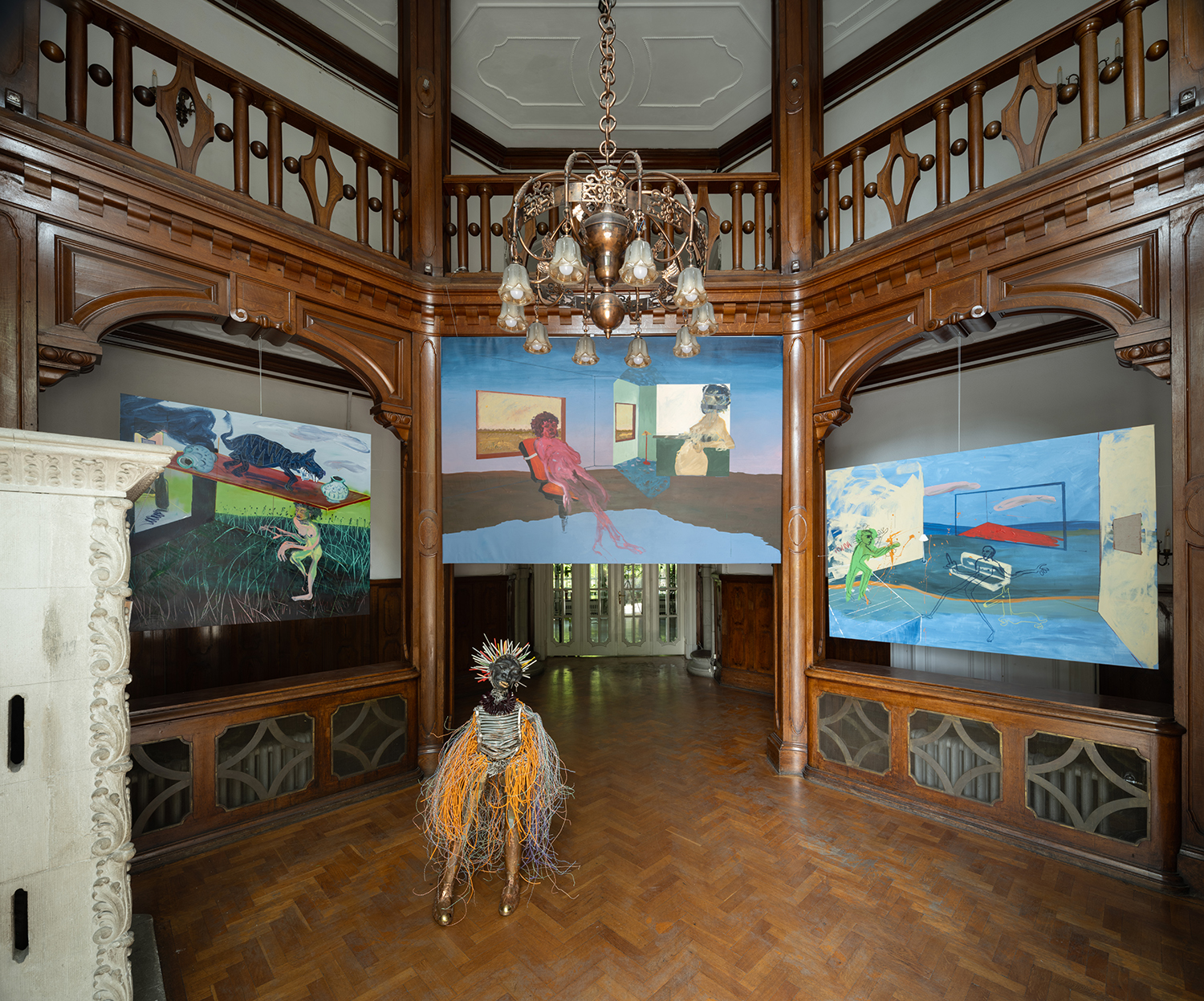


Youssra Raouchi
mirage, 2024
acrylic and oil pastels on canvas
300 × 190 cm
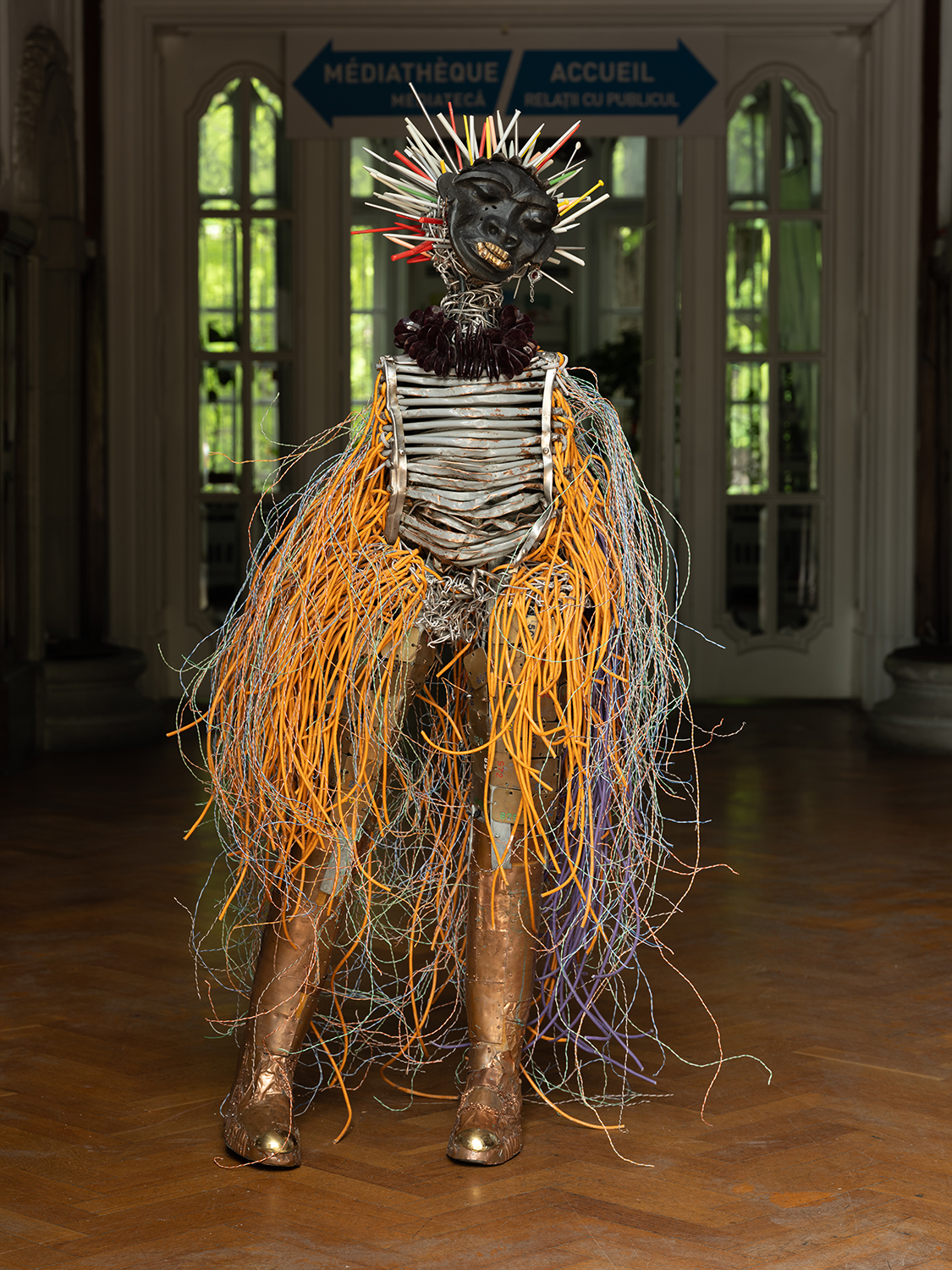
Terrence Musekiwa
Mutumburi Wemunzwa (Thorn Remover), 2023
Springstone, ceramic dentures, gold leaf
radiator, crystal hard plastic, internet cables
brass numbered plates, 1900’s riding boots
copper, knitting needles, and aluminum
148 × 62 × 65 cm

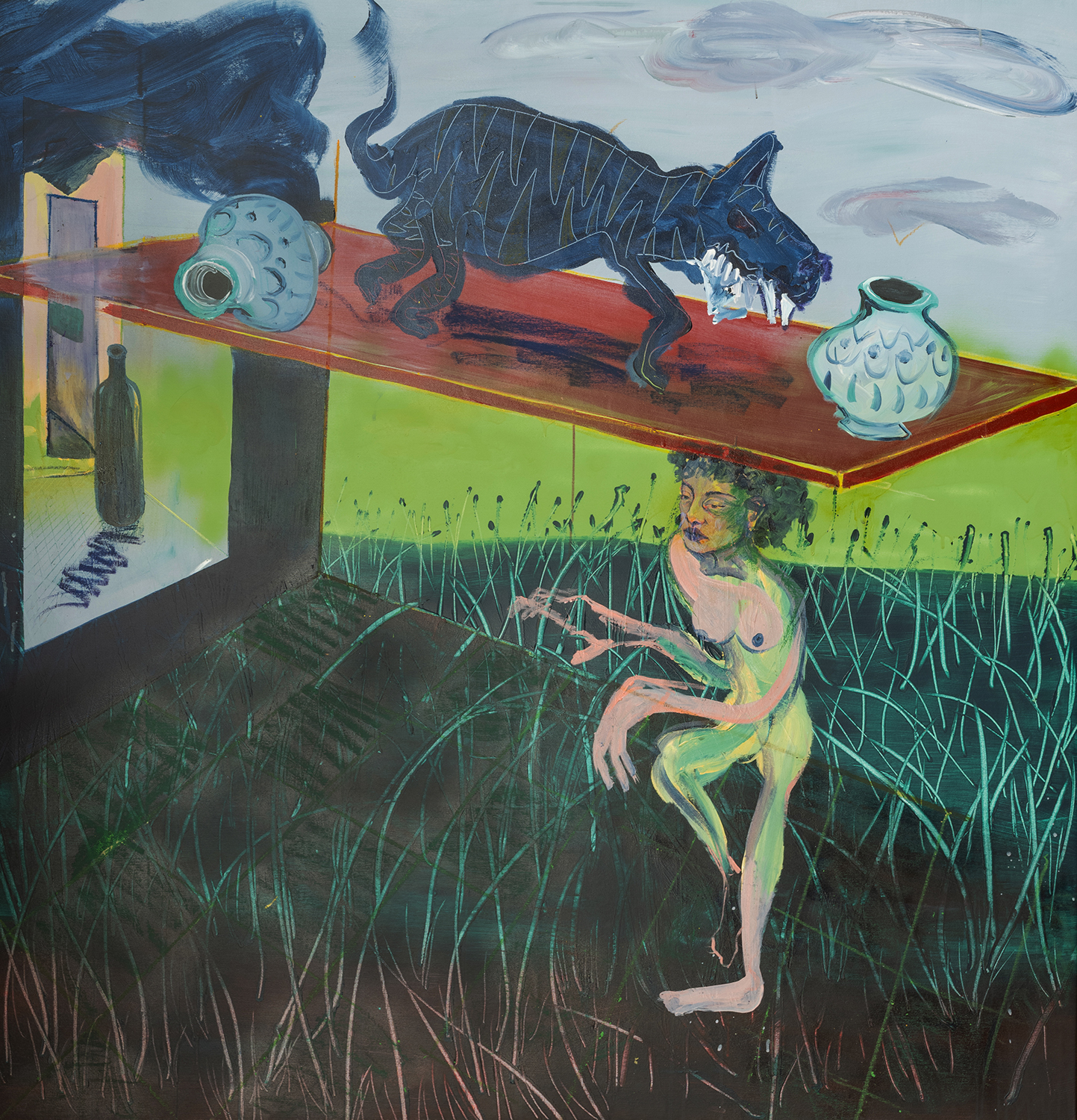
Youssra Raouchi
beware of the monster, 2023
acrylic & oil pastels on canvas
150 × 150 cm
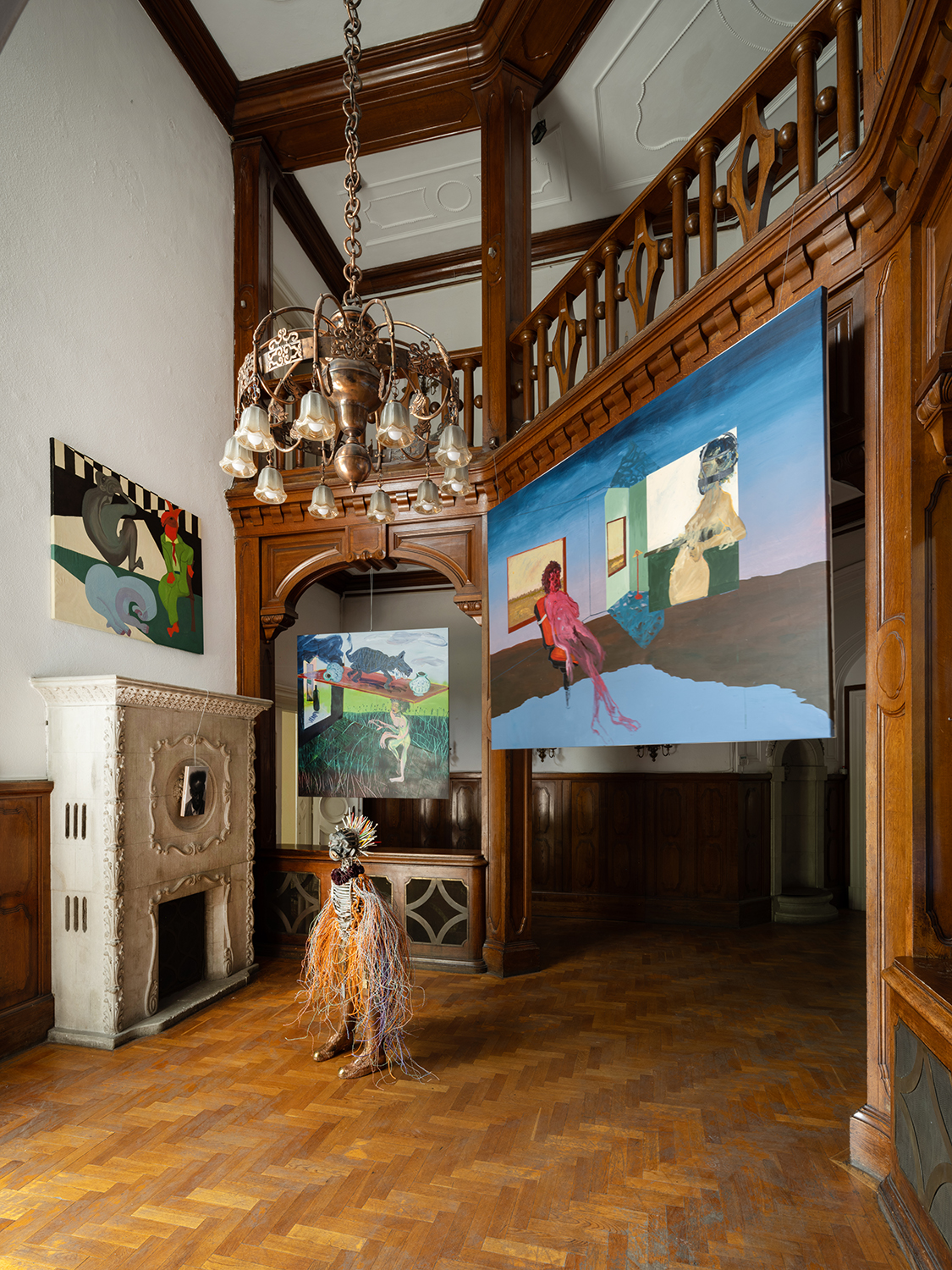
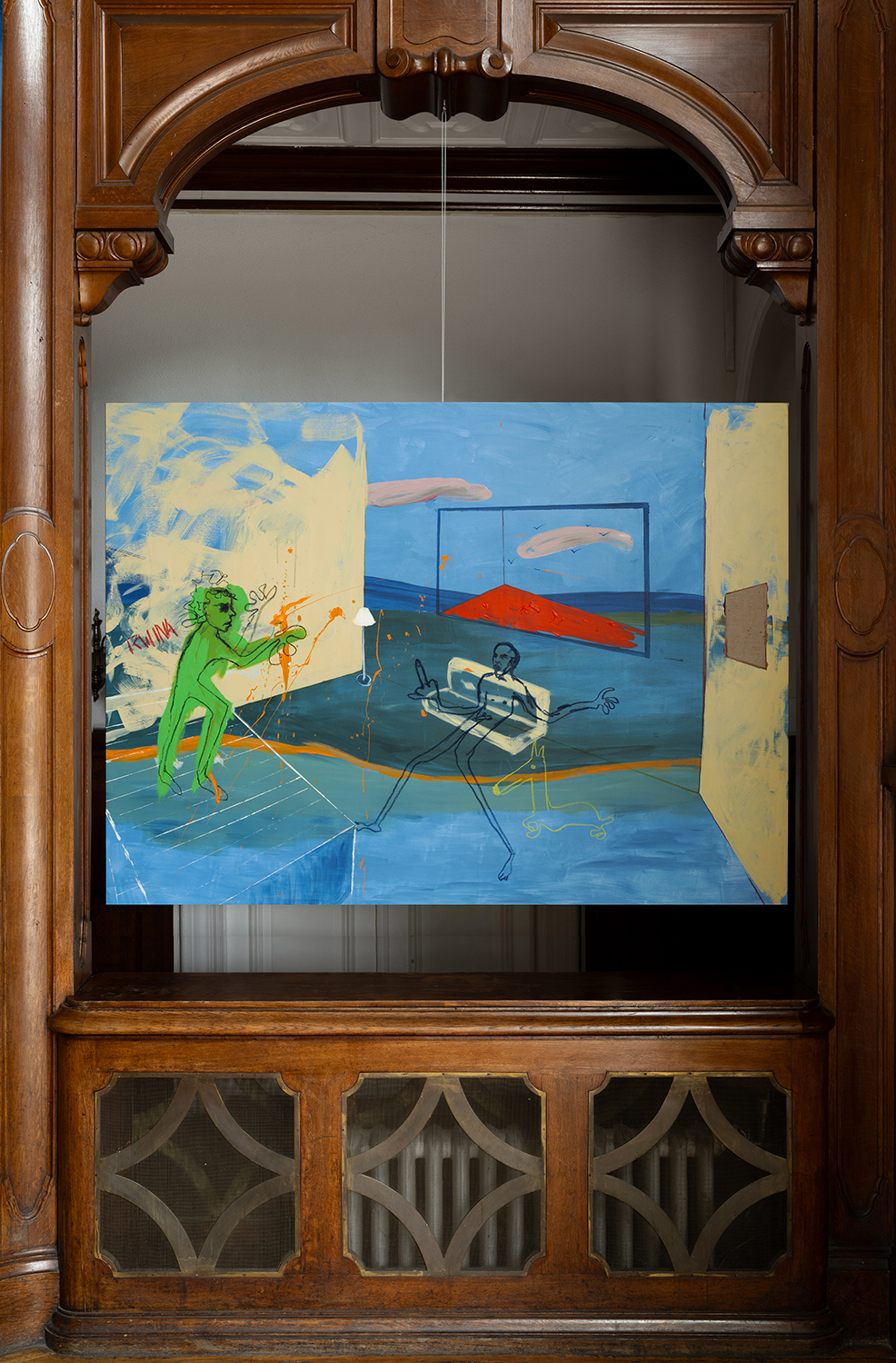
Youssra Raouchi
Rhisome, 2023
acrylic and oil pastels on canvas
147 × 200 cm
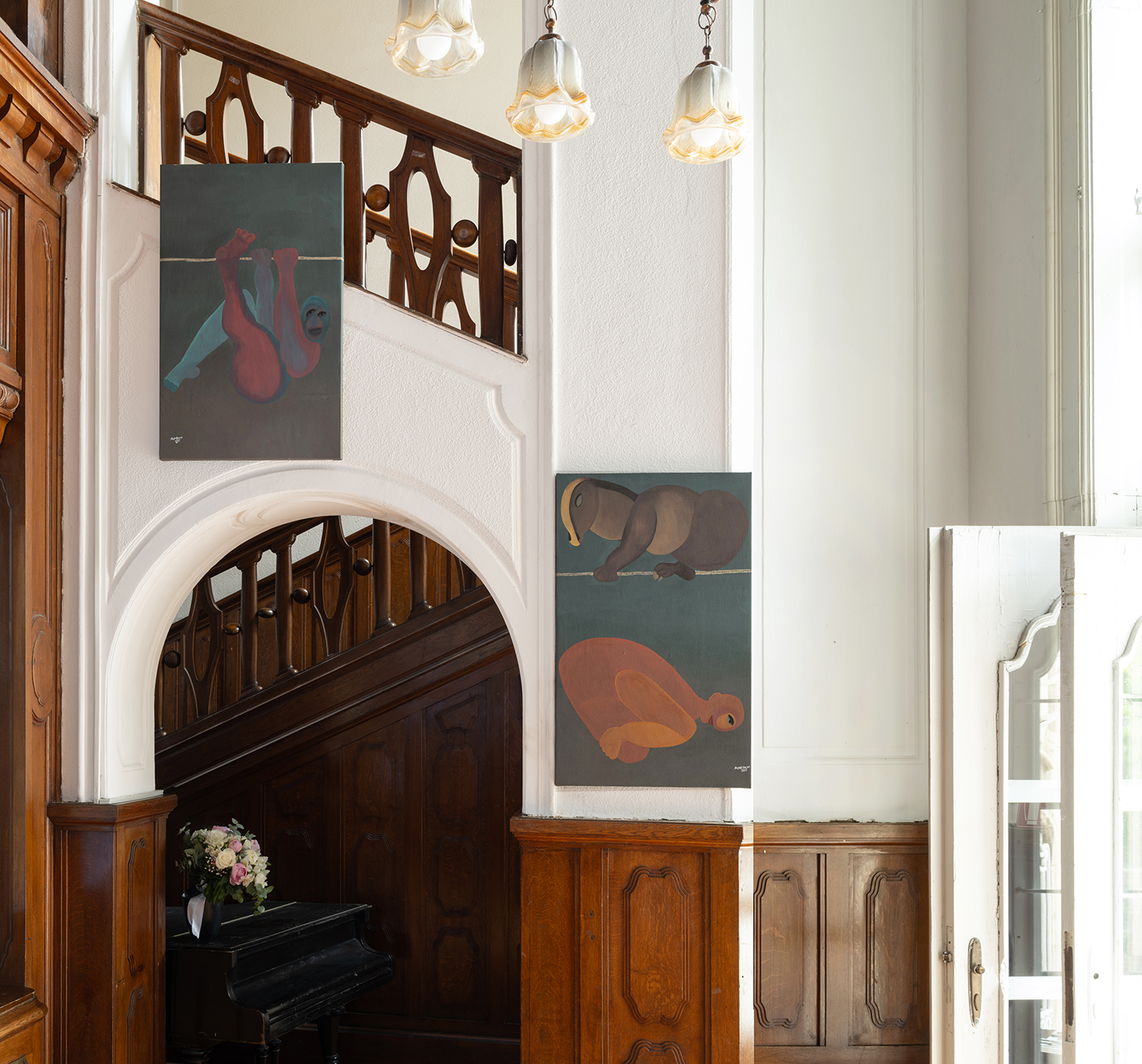
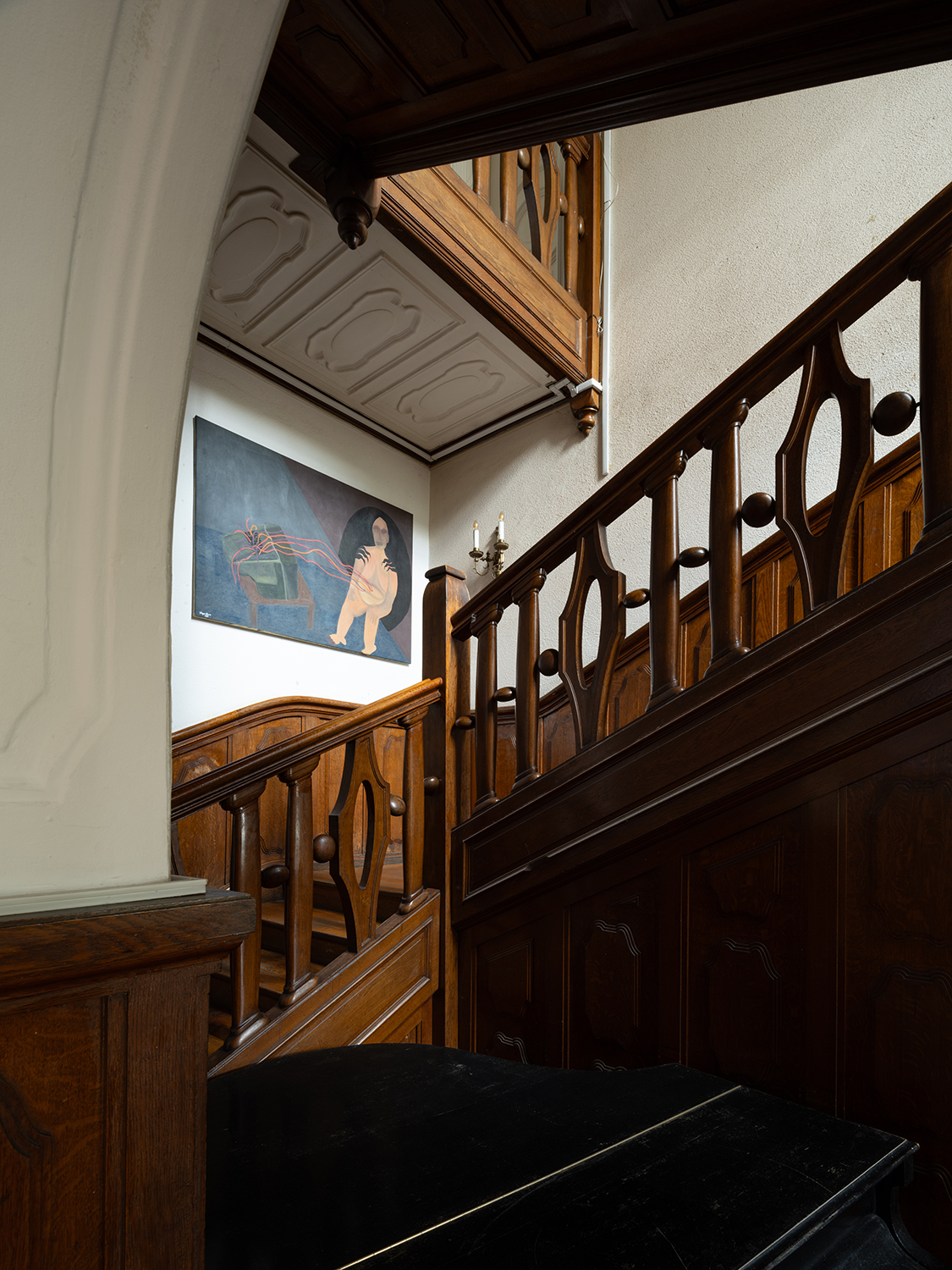

Najaax Harun
Held back with illusion, 2025
acrylic & oil pastels
150 × 100 cm
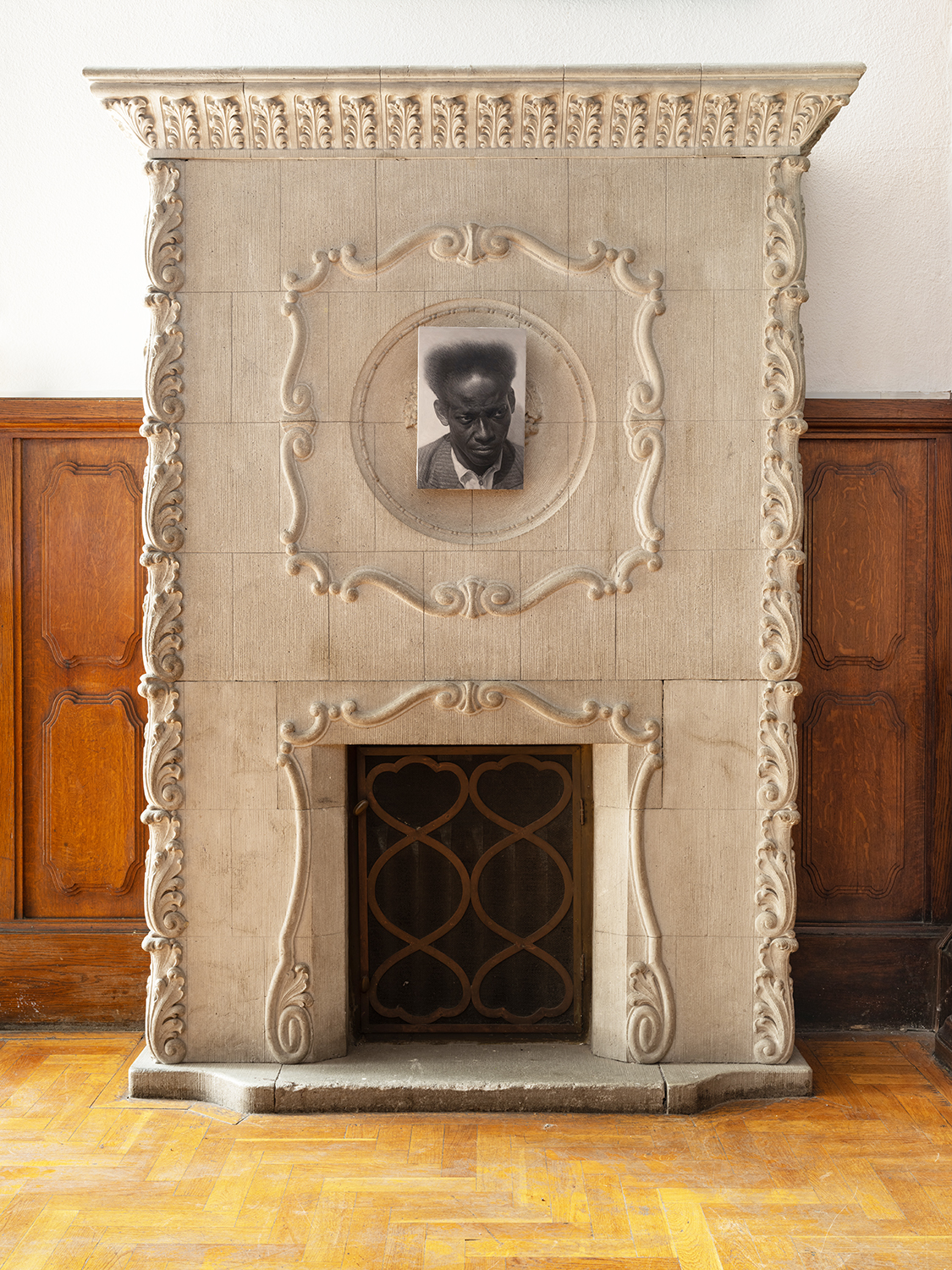

Xavier Robles de Medina
Anton de Kom photographed by Piet Zwart, 1933, Stedelijk Museum Amsterdam,
object nr. 1987.1.1599, 2025
oil on wood
36 × 24 cm

Najaax Harun
The spectacle of beasts, 2025
acrylic & oil pastels
150 × 100 cm
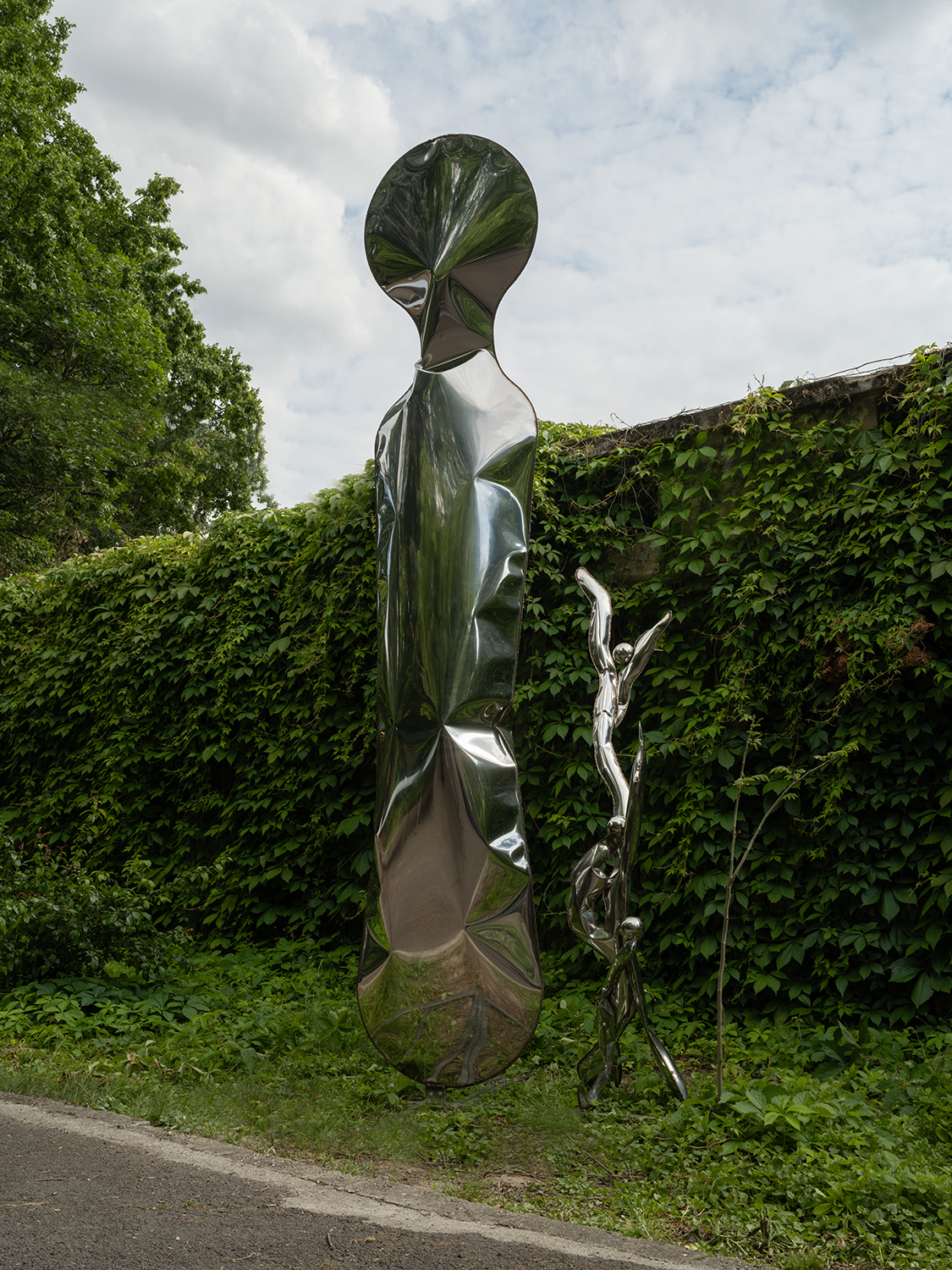
Ovidiu Toader
Om_1, 2024
stainless steel
400 × 80 cm
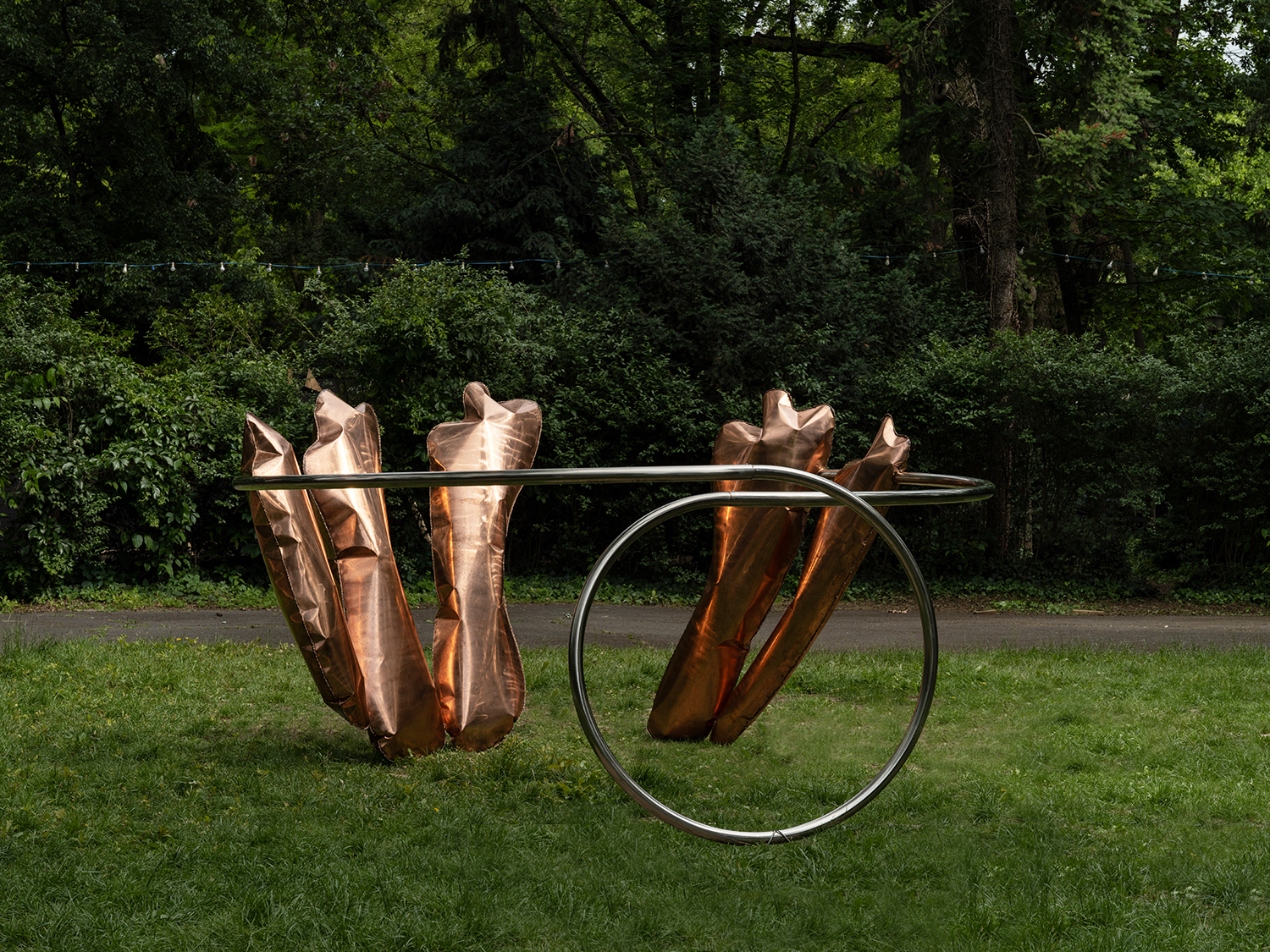
Ovidiu Toader
Bracelet, 2025
Copper and stainless steel
Height: 230 cm
Diameter: 370 cm
This exhibition takes its title and conceptual grounding from Homi K. Bhabha’s seminal theorization of the Third Space, a critical zone of cultural enunciation where identities are formed not through essentialist or binary structures, but through processes of negotiation, translation, and hybridity. The Third Space, as Bhabha suggests, is not merely a site of intersection but one of productive tension: a generative arena where difference does not dissolve but reconfigures the terms of engagement between cultures, histories, and epistemologies.
Positioned within this framework, The Third Space brings together six artists, Youssra Raouchi (Morocco), Najaax Harun (Somaliland), Terrence Musekiwa (Zimbabwe), Xavier Robles de Medina (Suriname), Marta Mattioli and Ovidiu Toader (Romania), whose practices emerge from disparate yet interlinked geographies of the Global South and so-called peripheral Europe. These artists articulate a shared urgency: to confront the structural marginalizations of non-central contexts while forging new aesthetic and political vocabularies rooted in local singularities. Rather than framing peripherality as lack, The Third Space affirms it as a position of epistemic richness and strategic opacity.
In doing so, the exhibition engages Piotr Piotrowski’s critical notion of a horizontal art history, a call to decenter dominant narratives by valuing the internal logics of art production beyond hegemonic Western paradigms.
As Piotrowski observed, peripheral artistic practices have long been compelled to situate themselves in relation to a dominant center in order to gain visibility. This exhibition resists that centripetal demand by turning our attention to practices that assert their own frameworks of meaning, grounded in place, history, and embodied knowledge.
Through material experimentation, symbolic layering, and political gesture, the participating artists re-map the margins, not as isolated or reactive, but as sites of autonomous production and interconnected struggle. Their work navigates themes of colonial residue, spiritual resurgence, ecological entanglement, and diasporic temporality, crafting a vocabulary that is at once specific and transversal.
The Third Space is thus less a fixed location than a methodology of curation, one that values relationality over taxonomy, and heterogeneity over cohesion. It proposes a dialogical space that does not seek consensus, but rather honors difference as a structuring principle. In assembling these distinct yet resonant practices, the exhibition builds a quiet infrastructure of exchange, where the periphery is no longer defined in opposition to the center, but as a locus of critical and imaginative agency.